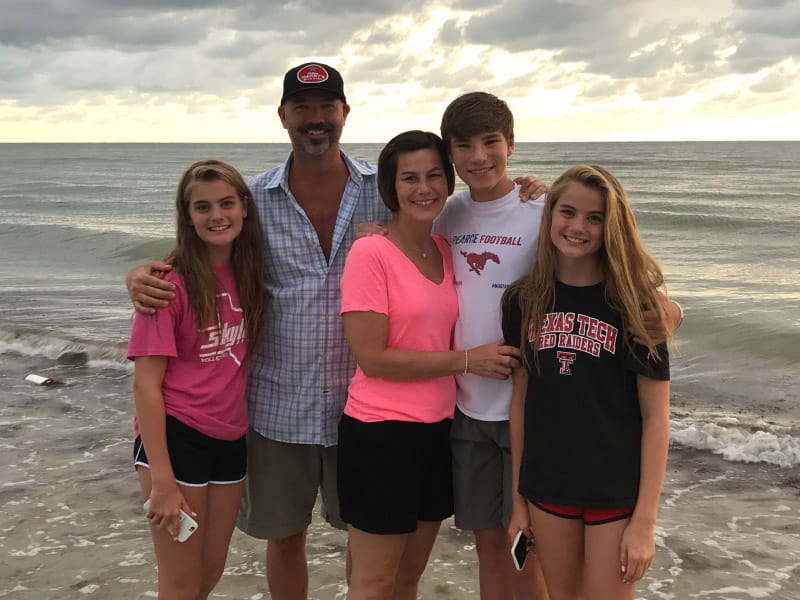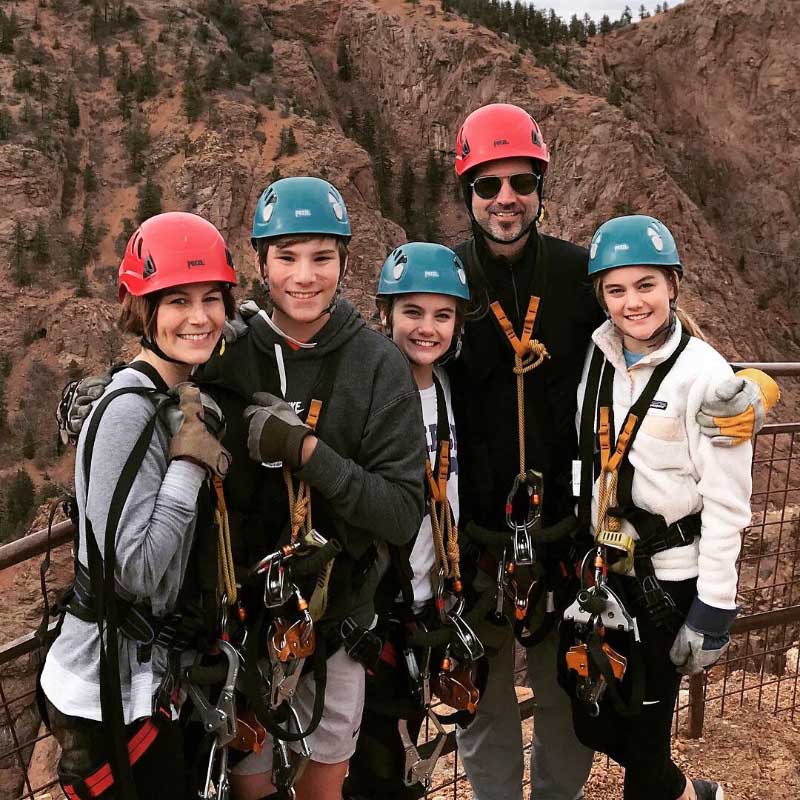He refused to leave the ER. More tests revealed a 99.9% blocked heart artery.
By Deborah Lynn Blumberg, American Heart Association News

In his early to mid-40s, Matt Bowman powered through triathlons and joined friends for 100-mile bike rides in the wide open countryside outside Richardson, Texas.
But at 48, he started to slow down. He couldn't keep up with his cyclist friends. His heart rate shot up while exercising. He went to see a cardiologist for some explanation.
His cholesterol was high, so he started medication to bring it under control. Meanwhile, Bowman became increasingly exhausted. More tests showed he had a higher than normal amount of calcium buildup in his coronary artery walls.
Bowman had a stress test to check how his heart was functioning. Not well, he discovered. His doctor scheduled a test to look for blockages.
Four days later, and week before Christmas, Bowman went to a concert with his wife, Robin, and a few friends. He felt like he might collapse.
He made it through the show. But at home in bed, a sense of doom and despair overtook him. He turned to Robin. "I'm going to the hospital," he said.
Robin, who was no stranger to hospitals after being treated for breast cancer the last two years, stayed home with their kids, Shea, then 16, and twins Emerson and Avery, 13.
In the emergency room, Matt told the doctor, "Something's wrong; check my heart."
His blood pressure and blood work looked OK.
"You're fine," the doctor told him. "You can go home."
Matt didn't budge. "Something is wrong," he insisted. "I'm not leaving."
Matt spent the night. The next day, his doctor ran more tests, including one that showed his left anterior descending (LAD) artery was significantly blocked. The LAD artery supplies a large portion of the blood to the left side of the heart.
He needed a stent to keep the artery open and blood flowing. But when his doctor tried to place it, he couldn't. Matt's artery turned out to be 99.9% blocked. He'd long been at risk for a possibly fatal heart attack.
Following the failed procedure, doctors explained to Matt what had happened. "But I ran 3 miles yesterday!" he said.
"You shouldn't be able to walk right now, let alone run," the doctor responded.
Matt had no family history of heart problems and exercised regularly. The likely culprit? Extreme stress from his demanding sales job, plus Robin's cancer diagnosis and treatment, his doctors said.
Matt's medical team tried a second time to place a stent. By his side was Kevin Mainz, his friend, neighbor and a cardiology physician assistant. Again, the location of the blockage made it too difficult to place a stent. Matt needed surgery to reroute blood around his blocked artery.
After the surgery, Robin held his hand. It was emotional to see Matt in pain, and she stepped into the hallway. Almost immediately, she collapsed.
When Matt woke the next day, his mother was by his side.
"Where's Robin?" he said.
"She hit her head," his mother replied. "She's in the hospital, too."
Matt's doctor told him walking was key to recovery. Nurses helped him hobble over to Robin's room. She was asleep with a bandaged head but seemed OK. Seeing her in the hospital again, he was relieved her cancer treatment was behind them.
Soon it would be Christmas. Matt was determined to celebrate with Robin and the kids at home. He spent his day walking laps around the hospital floor.
As he did, he noticed family and friends trickle in to visit Robin. They spent hours with her. But I'm the one who just had open-heart surgery, he thought.
Two days before Christmas, nearly a dozen people spilled out of Robin's room.
Matt limped in. "Robin, what's going on?" he said.
Everyone filed out of the room.
"They did an MRI," Robin said. "They found tumors in my brain."
Matt was still on pain medication and his thinking was hazy. "Tumors, not cancer," he said. "You'll be fine." He went back to his room and lay down.
A family friend came in and took his hand. "Matt, Robin has eight cancerous tumors in her brain." Only then did the severity of the situation begin to sink in.
Meanwhile, at the Bowman home, neighbors found Christmas presents that Matt and Robin had already bought and put away. The friends wrapped the gifts and placed them under the tree. On Christmas Eve, Matt and Robin went home together. With the kids, they opened gifts.

Matt did cardiac rehabilitation and returned to work. He found himself exhausted. Meanwhile, Robin was starting to have seizures. He quit to become her full-time caretaker, helping her as she moved from walking with a cane to a walker to a scooter, then a wheelchair.
Doctors gave her 18 months to live. At one point, she had 22 tumors in her brain. But she lived for five years. Robin, a former middle school home economics teacher and then stay-at-home mom, passed away in April 2024. She was 51; she and Matt had been married almost 24 years.
An online tribute said: "Her kind and gentle nature, infectious laugh, radiant smile, and those endearing dimples lit up every room she entered."
As Matt grieves, he's working on controlling stress. "Matt was a warrior," said Mainz. "He took care of himself, but he really stepped up for his wife and his family."
His story is a reminder of the importance of managing stress, Mainz said. He recommends meditation, relaxation techniques and exercise. "I tell my patients, you have to exercise, it's one of the best things for our bodies and our minds."
Matt walks 3 miles a day and rides a stationary bike. He's left his road bike hanging from a hook in the garage because he's wary of venturing out too far from medical help, should he need it.
He often thinks about how his family's story could have played out very differently had he not been firm about staying in the hospital that night five years ago.
"If I had not insisted on staying, there was a really good chance both Robin and I could have passed and left the kids all alone," Matt said. "You know your body. If you feel that something's not quite right, do not take that for granted."
Stories From the Heart chronicles the inspiring journeys of heart disease and stroke survivors, caregivers and advocates.





